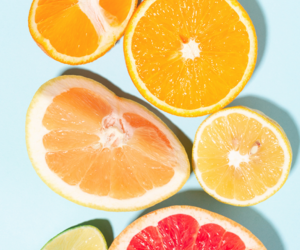The senior vice president of agriculture and natural resources at the University of Florida’s Institute of Food and Agricultural Sciences weighs in on the status quo and future of Florida citrus.
GAINESVILLE – Hope is a most unscientific phenomenon. It’s based largely on a desire for what could be, not on what evidence has already proven.
Yet there was Dr. Jude Grosser, plant geneticist based in Lake Alfred, in a hotel ballroom last month pitching hope. Yes, he had the data, the charts, the photos and the bullet points projected on a screen to give his presentation all the trappings of an academic treatise on oranges. The underlying message, though, was not to give up hope.
A terrible disease has ravaged Florida’s iconic citrus groves. Citrus greening has cost the industry billions of dollars in the past decade. It’s caused despondent farmers to burn their trees and start over with other crops or animals, or to sell to developers. I would argue that the citrus greening epidemic has imposed a natural selection not just on our groves but our growers. The disease may be culling our herd of farmers, leaving the species fortified with the presence of only those with the greatest capacity for hope.
But even the stalwarts need to have hope stoked to offset the continuing bad news about shrinking crops. Citrus growers’ meetings these days have the potential to become survivors’ gatherings, a slog through the litany of challenges instead of a celebration of a way of life and an update on the science that supports it. Grosser’s work for the University of Florida’s Institute of Food and Agricultural Sciences is one of the most promising bodies of research among the studies funded by tens of millions of dollars from the federal and state governments and the growers themselves.
Others have focused their work on fighting the fungus that attacks the trees. Entomologists try to control the Asian psyllid that carries the bacterium with it from plant to plant. Grosser sees a possible solution in breeding. By creating new hybrids at the Citrus Research and Education Center, he believes he is getting closer to producing an orange tree that is tolerant or even resistant to greening.
He and his colleagues Fred Gmitter and Bill Castle have, through breeding experiments, identified new 17 rootstock cultivars that show a lower rate of citrus greening infection and less symptoms once infected than in existing trees. In some cases they see their experimental trees with a 10 to 20 percent infection rate growing right alongside commercial varieties that have a 70 percent rate or higher.
Growers saw hope on the screen in the form of Grosser trees that are the only healthy plants on a plot where the other trees are sickened by greening. The contrast documents the devastation … but the growers are already living that. More importantly it delivers a picture of what could be. That is, hope.
The work is far from done. Grosser is the first to say his results aren’t yet conclusive.
The research of Grosser and the cadre of public-spirited scientists dedicating their professional lives to combatting greening will continue to rely on funding beyond their university paychecks to do this important work.
We must keep the public and the policy makers aware of the continuing need for resources to save an industry.
It’s a race against the clock. With human disease, you can’t walk away from the patient. The fight continues no matter the odds. But agriculture is a business choice, and it makes no sense to continue to depend on oranges for your livelihood if oranges are dying off.
That’s pressuring stewards of the land to abandon the utopian vision represented on orange crates and surrender the land to those who depict their utopian vision on billboards with the smiling families they hope to attract to their subdivisions.
The thing is, those families’ smiles are put there by a strong economy, healthy food and a sense that where they live is some place special. All those things grow on disease-free trees in Florida.
Grosser didn’t deliver a cure at the Citrus Mutual meeting in Bonita Springs, but he did stake out science as the source of renewed hope that we can save something that symbolizes Florida as vividly as a rocket or a fantasy kingdom.
